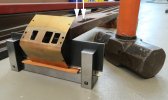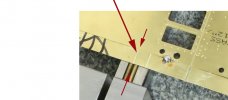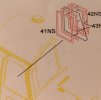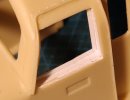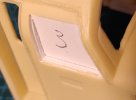michael080
Western Thunderer
Evening Folks,
I have been lurking here for some time and had a few threads of my builds, so I thought it might be time to start my own workbench thread. As there are quite a few Michaels around here, I thought I might distinct my workbench a bit languagewise.
First project here will be a Class40 kit, designed by David Parkins, published and originally sold in the early 2000s. I had a chance to pull it from someones stack and push it on my own a year ago and decided that now is the time for 480mm long loco.
Right now, I am browsing photo galleries to find a frequently photograped prototype to supply the necessary detail information about an individual prototype. Located in Germany, I have no "home line" where I have already been trainspotting as a boy, so I am quite open. I like the green livery, so it will be likely a machine in its early live.
My first question to the assembled community: Has there ever been a build thread for this kit? Browsing through the manual leaves questions unanswered.
I have been considering various options how to motorize the kit. With 8 axis, there are a few possibilities, but I think Davids proposal to only drive the innermost axis of every bogie is not the best. You can put as much weight on the body as you want, you will always get only a small fraction on the driven axle. So currently I think motorizing the kit as 1 (A 1 A) (A 1 A) 1 with two motors might be better.
Long posting, no pictures yet, so here are few examples of the magnificent frets in the kit.
first the huge main body fret. The body ends will be resin parts. I will see how to bend the radius between floor and walls.

These are the outer bogie parts. Eight pieces, for two bogies, the fret has 0.6mm, so the side plates will be 1.2mm after sweating them together.
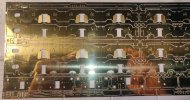
This is the very delicate nickel silver fret. Part 54 is the louvre covering the ventilation air ducts. You can see the 10x10mm pattern on my desk pad.
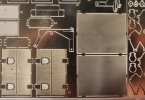
I will post as frequently as possible, but I am not the most diligent writer....
Michael
I have been lurking here for some time and had a few threads of my builds, so I thought it might be time to start my own workbench thread. As there are quite a few Michaels around here, I thought I might distinct my workbench a bit languagewise.
First project here will be a Class40 kit, designed by David Parkins, published and originally sold in the early 2000s. I had a chance to pull it from someones stack and push it on my own a year ago and decided that now is the time for 480mm long loco.
Right now, I am browsing photo galleries to find a frequently photograped prototype to supply the necessary detail information about an individual prototype. Located in Germany, I have no "home line" where I have already been trainspotting as a boy, so I am quite open. I like the green livery, so it will be likely a machine in its early live.
My first question to the assembled community: Has there ever been a build thread for this kit? Browsing through the manual leaves questions unanswered.
I have been considering various options how to motorize the kit. With 8 axis, there are a few possibilities, but I think Davids proposal to only drive the innermost axis of every bogie is not the best. You can put as much weight on the body as you want, you will always get only a small fraction on the driven axle. So currently I think motorizing the kit as 1 (A 1 A) (A 1 A) 1 with two motors might be better.
Long posting, no pictures yet, so here are few examples of the magnificent frets in the kit.
first the huge main body fret. The body ends will be resin parts. I will see how to bend the radius between floor and walls.

These are the outer bogie parts. Eight pieces, for two bogies, the fret has 0.6mm, so the side plates will be 1.2mm after sweating them together.

This is the very delicate nickel silver fret. Part 54 is the louvre covering the ventilation air ducts. You can see the 10x10mm pattern on my desk pad.

I will post as frequently as possible, but I am not the most diligent writer....
Michael


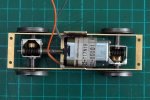
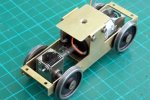
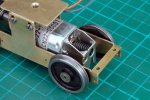
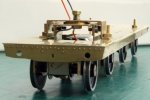
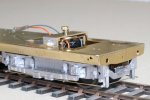
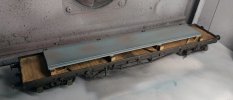

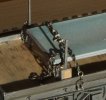

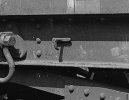
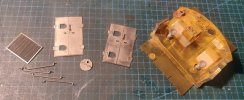
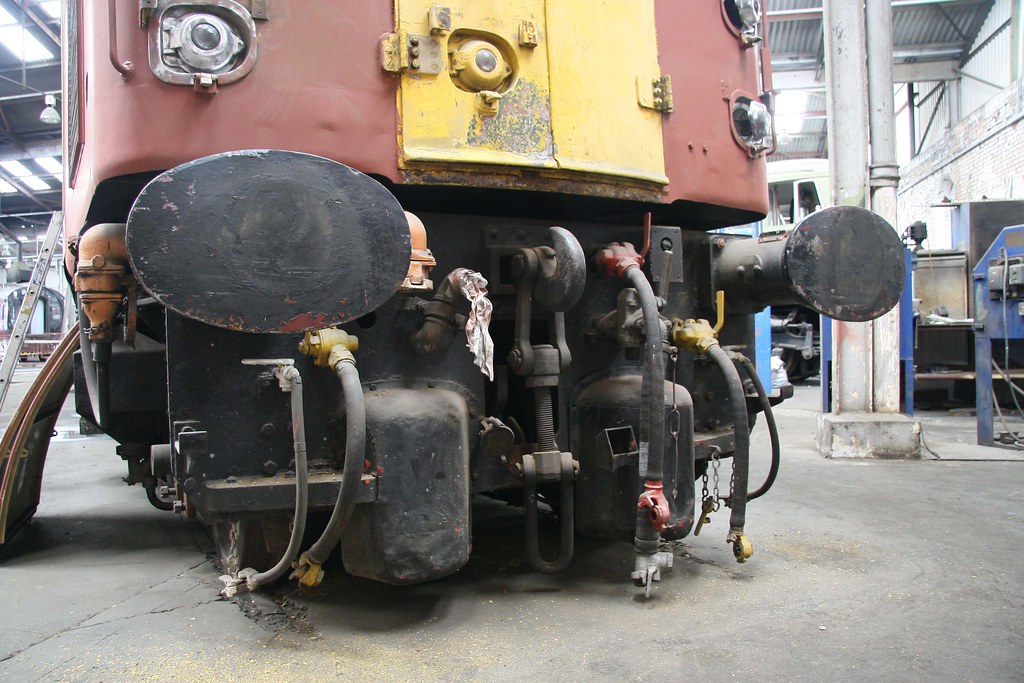
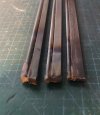
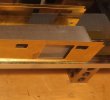
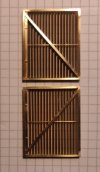

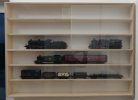

 The sledgehammer was tapped down on the rusty steel bar where the arrows show.
The sledgehammer was tapped down on the rusty steel bar where the arrows show. 